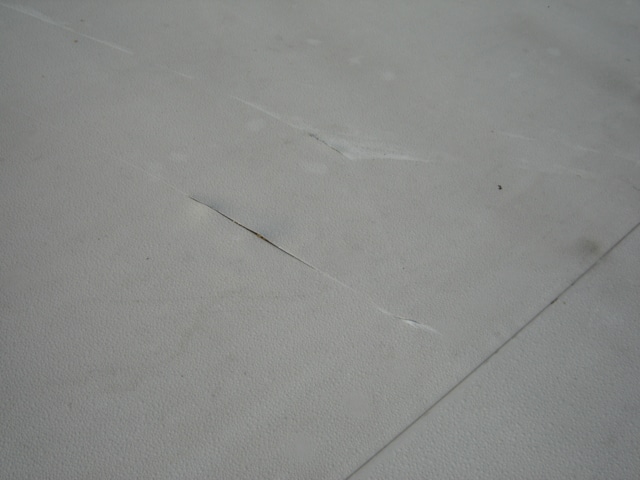
Blisters and delaminations aren’t the same issue, but they have similar symptoms and cause similar problems. They both attack the roof’s surface and, if left to fester, both make a roof system more susceptible to wind and water damage. Knowing how to tell them apart is the key to proper repair and prevention, which in turn protects the roof investment and helps building owners avoid costly damage.
3 Ways Blisters Cause Damage, Especially on Built-Up Roofs
Roof blisters can form if workers allow air or moisture to get trapped between layers during roof installation; built-up roofs are particularly susceptible.
There are three primary issues associated with blistering:
- Workers or employees can break blisters by stepping on them, which can expose the building to leaks.
- Strong gusts can catch large blisters and create uplift issues.
- Blisters can trap moisture and draw in more, even when it doesn’t rain. This trapped moisture can either leak into the building or collect inside the roof, which can lead to extensive damage.
Fixing Roof Blisters: Stop the Problem at the Source
To permanently repair blisters, it’s necessary to cut away the blistered area down to the insulation. Workers should always inspect the surrounding areas for tears, punctures, or any other anomalies that could let in water. Next, they must install the same number of plies as were damaged or removed and make sure to extend the bottom ply at least six inches beyond the damaged area. Finally, they can reapply the surfacing and test to ensure a complete seal.
Delamination: When the Membrane and Insulation Separate
Delaminations commonly affect single-ply and fully adhered roofs. Like blisters, delamination can come from improper installation in inclement weather. If the environment is humid, moisture can get trapped between the membrane and insulation. Although it often isn’t obvious during installation, this trapped moisture can cause the membrane to pull away from the insulation. During powerful storms, there is a real danger that a strong wind could result in a tear-off.
Even if the installation is flawless, delamination can still occur over time due to UV exposure and slight shifts in the building’s architecture.
Finally, roofs on special-purpose buildings that generate significant levels of humidity — such as freezer facilities or indoor swimming pools — are inherently prone to delamination.
Remove and Replace: Repairing a Delaminated Roof
The best fix in most situations is to simply replace the delaminated material with new membrane. That isn’t always necessary on fully adhered roofs, which can sometimes be restored without removing the existing membrane. A good contractor should be able to determine if the membrane became delaminated because of trapped moisture, or because of an issue with the manufacturer’s materials. In those cases, it is crucial to meticulously document the anomalies to alleviate warranty or replacement issues that may arise.
Though similar in both cause and effect, understanding the differences between roof blisters and delamination is critical in order to identify them during inspections, repair them correctly, and prevent their return. Like so many other roof issues, blistering and delamination can be repaired easily if they’re caught and dealt with right away, but can cause significant damage if they are not.
